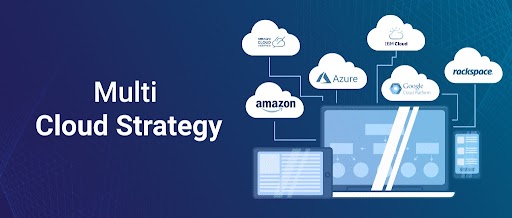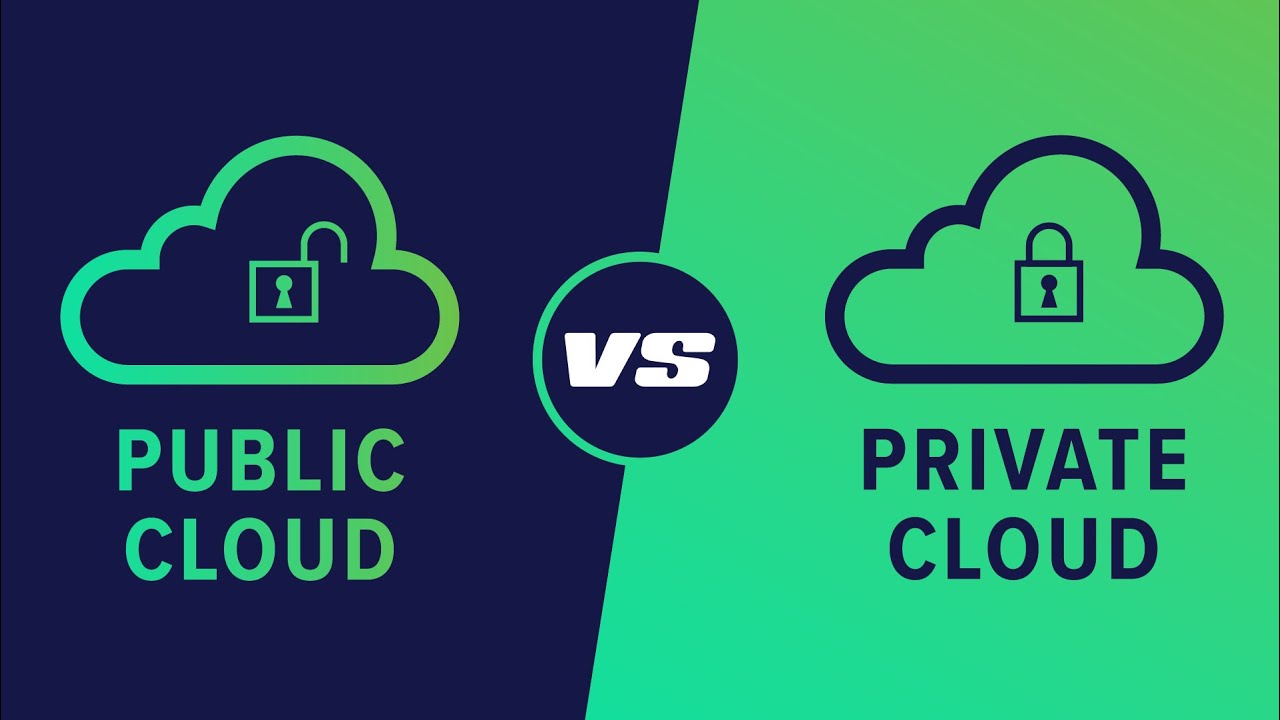
A private cloud and a public cloud are combined in a hybrid cloud architecture. The majority of businesses that wish to migrate to the cloud begin with a hybrid cloud implementation. Without immediately getting rid of their on-premises equipment, they can transfer certain data to the cloud.
Companies in sectors where industry laws control data security might benefit from a hybrid cloud implementation. For instance, there are particular specifications for network controls, audits, retention, and monitoring in the banking and financial sector. In a hybrid cloud strategy, a bank may maintain low-risk data on a public cloud environment and sensitive, regulated data on a private cloud. Similar to the financial sector, the healthcare industry handles large volumes of sensitive data and is governed by laws like the Health Insurance Portability and Accountability Act (HIPAA), which calls for a variety of security measures, making a hybrid cloud perfect.
A hybrid cloud architecture is appropriate for organizations or divisions with data-intensive workloads, such as the media and entertainment industries. They may use a scalable, affordable public cloud provider to store data that won't need to be accessed as regularly, such as backups and archives, and benefit from high-speed, on-premises technology to access huge media files quickly.
What Is Multi-Cloud?

A multi-cloud architecture consists of several cloud services offered by various cloud providers (either public or private). Numerous public clouds, multiple private clouds, or a mix of public and private clouds can all be referred to as "multi-cloud." A multi-cloud deployment that also uses on-premises infrastructures or private clouds is referred to as a hybrid multi-cloud.
Multiple IaaS (Infrastructure as a Service) suppliers or separate vendors for IaaS, PaaS (Platform as a Service), and SaaS (Software as a Service) services can be used in multicloud installations.
Multi-cloud might include many cloud providers offering various services, or it can just be used for redundancy and system backup. As an illustration, a company may utilize one public cloud for the database and another for scale computing. You may maximize the benefits of each service in this way.
What is the difference between a public cloud and a private cloud?

A public cloud is a cloud service that multiple customers use, although they don't interact with each other, just as many customers can use one bank without drawing on each other's funds.
A private cloud is a cloud service for only one customer. An organization can either build and maintain a private cloud themselves, or they can pay an external vendor to host a private cloud for them.
What are the factors while choosing a cloud strategy?

Each public cloud provider has unique cost structures, as well as unique strengths and drawbacks. It takes a lot of reflection to develop a cloud strategy, including evaluation of current workloads, databases, networks, SLAs, storage requirements, and other factors. After that, businesses may start mapping their present and upcoming workload plans to the services provided by public cloud providers. It is not surprising that businesses are utilising more than one cloud supplier as a way to match each function with the provider who is most qualified or offers the greatest deal to handle it.
When using a multi-cloud strategy, the location of the other business IT components must be taken into account. For instance, if using a hybrid strategy, the database servers, authentication resources, monitoring, and management procedures would all normally be placed on-premises. These resources would need to be housed someplace and have access to all enterprise-wide resources to enable seamless operations if using a multi-cloud but NOT hybrid cloud strategy.
When developing a cloud strategy, Gartner recommends the following six steps, warning that if you are not currently cloud-first, you are already falling behind your rivals.
- Cloud first and multi-cloud - A holistic strategy to advance business technology is required to become cloud-first, which incorporates not only IT but the entire organization in defining the objectives and results. Enterprises should be aware that not all applications are appropriate for the cloud, and that adopting a cloud-first strategy does not necessitate the instant abandonment of all on-premises workloads. Until they are thoroughly refactored, certain business apps won't ever be moved to public cloud providers.
- Continuous placement assessment -A holistic strategy to advancing business technology is required to become cloud-first, which incorporates not only IT but the entire organization in defining the objectives and results. Enterprises should be aware that not all applications are appropriate for the cloud, and that adopting a cloud-first strategy does not necessitate the instant abandonment of all on-premises workloads. Until they are thoroughly refactored, certain business apps won't ever be moved to public cloud providers.
- Plan for the future - Migration to the cloud is a continuous process. As apps, on-premises resources, and cloud provider architecture expand, activities such as acquiring new skills, understanding how different providers differ from one another, and creating process improvement plans based on cloud provider capabilities must be continually iterated. Consider a multi-year migration effort, and after that, consider an annual review.
- Focus on governance and management - Multi-cloud governance is more difficult than simple cloud governance. Many businesses are unaware of the full footprint their IT departments have within the cloud or clouds since business units can launch their own services with simply a credit card. Businesses that can monitor cloud service use may start to manage their multi-cloud, hybrid IT system as a single entity, or at the absolute least, make sure that everything under their control is appropriately managed to satisfy regulatory requirements.
- Find the right tools for the right cloud - Although each cloud provider has their own set of management and deployment tools, organizations can develop a tool strategy that spans multiple clouds by abstracting each provider’s tools layer. For example, Kubernetes can provide cloud orchestration tools that enable applications to be deployed on a single cloud, on a hybrid cloud, or in a hybrid multi-cloud fashion. By investing in a coordinated tool strategy for management and orchestration, enterprises can eliminate many of the headaches that are common in multi-cloud deployments and reduce the time needed to educate IT staff and users alike.
Although cross-platform consistency is the aim, companies should also make use of each cloud platform's native toolset to acquire the most comprehensive understanding of the intricacies of each provider's platform when necessary. To fulfil all of their management and orchestration demands, firms are likely to wind up using vendor-specific, cross-platform, and in-house technologies. - Consider cloud holistically, including SaaS - Applications hosted on-premises, on an IaaS platform, or on a PaaS platform may eventually become obsolete or be replaced by less expensive SaaS alternatives. Every business should regularly assess its cloud computing needs to determine how to improve its overall cloud computing positions, whether a workload should be hosted elsewhere, and whether it needs to refactor older or legacy applications to benefit from more agile, cloud-native ones that are better suited to current cloud environments.
Which type of cloud deployment should businesses use?

Finding the right cloud deployment comes down to a number of factors. Chief among them are cost and security.
Cost
Compared to other forms of infrastructure, public clouds often have lower overhead and less direct administration. The majority, if not all, of the duties involved with managing a data center—provisioning servers, implementing security upgrades, and so on—are handled by the cloud vendor. Because of this, companies that rely heavily on cost may choose to go to a fully public cloud implementation or perhaps a multi-cloud strategy.
Security
A hybrid cloud deployment could be the ideal option for firms that must adhere to strict regulatory criteria for any portion of their data or business logic. They can store certain data in a hybrid cloud that is more closely regulated, such as a private cloud or on-premise data centre.
These strictly regulated settings, nevertheless, are not always more secure. Depending on their budget for cybersecurity, public cloud companies sometimes have greater resources than individual firms for patching and data protection.
Other factors to consider:
Time and effort spent on cloud migration - The challenge of fully migrating corporate activities and data to the cloud may be resource-intensive (although for many businesses it is worth the effort). Some firms may not be able to make a full migration to the cloud right away, leading them to embrace a hybrid cloud approach.
Reliability - A backup cloud may take on some of the workload if one cloud becomes overburdened, which can assist keep websites and apps up and running during times of heavy customer demand. Due to the fact that a task "bursts" from one cloud to another, this tactic is also known as "cloud bursting."
Vendor lock-in - Utilizing several public clouds helps lessen reliance on any one cloud provider. By placing itself in front of any sort of cloud and enhancing performance, security, and reliability, Cloudflare also aids in reducing vendor lock-in.
Performance - If a public cloud hosts servers at the network edge, moving to the cloud can vastly boost performance by cutting down on latency
These solutions give essay writers the knowledge and tools they need to create powerful pieces tailored to their target audience. From understanding how to craft compelling stories to developing content strategies specific to each essay, these solutions can help essay writers unlock their creativity and reach higher levels of success. Additionally, essay writers gain access to advanced analytics and insights that can ensure their work is well received by the reader, maximizing its impact in today's competitive marketplace. Using new business transformation solutions, essay writers can become more effective storytellers and communicators globally.
An essay writer service can benefit from upskilling to deliver his vision using new business transformation solutions. The essay writer can learn about the latest trends and advancements in their field, as well as modern technology and software, to make them even more efficient. They also need to become familiar with cloud computing and how it can increase productivity and streamline communication between essay writers and clients. Additionally, they should take advantage of digital optimization tools like artificial intelligence (AI) to optimize content for search engine rankings and help essay writers create more relevant content for readers. With these skills, essay writers can explore various opportunities to help them reach their fullest potential while helping the client get the most out of the essay writing process.